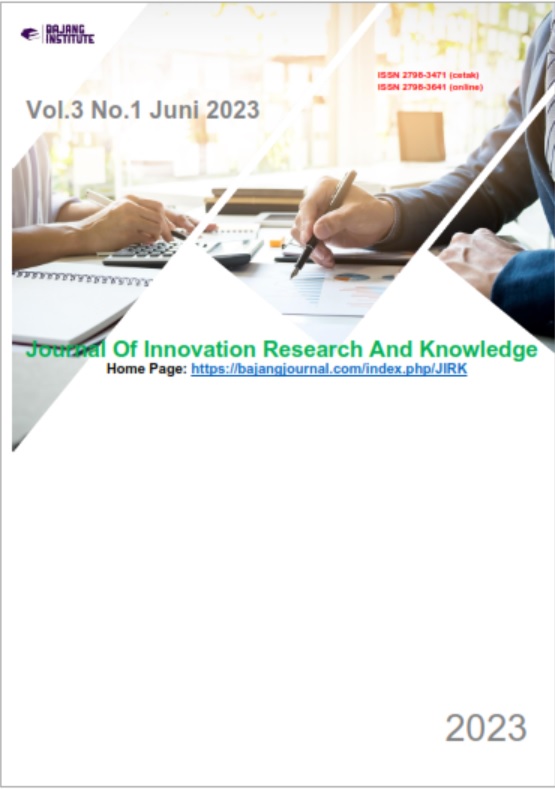IMPLEMENTATION OF FUZZY TIME SERIES IN FORECASTING ONLINE STUDENT LEARNING DEVELOPMENT
DOI:
https://doi.org/10.53625/jirk.v3i1.5955Keywords:
Education, Online Learning, Forecasting, Fuzzy Time SeriesAbstract
Education has an important role in improving the quality of personality in intellectual and moral aspects. The COVID-19 pandemic has affected all human activities, one of which is in the field of education. With the stigma circulating, the learning system that was originally carried out face-to-face has changed to learning from home. Problems that arise in online learning are many changes that occur significantly, especially obstacles to students' understanding of the material and also students must master all subjects in school in accordance with the majors. Purpose: forecasting can be used as an effective tool in helping predict the development of online student learning in the coming month or period. Methods: In this study, the forecasting system that will be designed has several factors that affect the results. The Fuzzy Time Series method is the right method, because it does not require assumptions as forecasting using classical forecasting methods. In this research, forecasting using data from students of SMKN 3 Boyolangu Tulungagung class X majoring in TPM with a sample of 55 students. Results: the forecasting system for student learning development using the Fuzzy Time Series method can work well, namely by displaying the actual value and the results of the Fuzzy Time Series method (determining intervals, fuzzification, FLR, FLRG and defuzzification). The MAPE level is 0.404%. Conclusion: the system is declared accurate in forecasting because it has an error rate of less than 1%.
References
Anwary, A. A. Prediksi Rupiah terhadap Dolar Amerika Menggunakan Fuzzy Time Series. Semarang: Universitas Diponegoro, 2011.
Boaisha, S. M.,& Amaitik, S.M. Forecasting Model Based on Fuzzy Time Series Approach. 2010.
Hafiyya, N., Virgantari, F., & Widyastiti, M. “IMPLEMENTASI METODE FUZZY TIME SERIES PADA PERAMALAN HARGA EMAS DI INDONESIA”. Interval: Jurnal Ilmiah Matematika 2, No.2 (2022): 94-103.
Hasbiollah, M. dan RB. F. Hakim. “Peramalan Konsumsi Gas Indonesia Menggunakan Algoritma Fuzzy Time Series Stevenson Porter”. Prosiding Seminar Nasional Matematika dan Pendidikan Matematika UMS (2015): 508-518.
Muqtadiroh, F. A., A. R. Syofiani, dan T. S. Ramadhani. “Analisis Peramalan Penjualan Semen Non-Curah (Zak) PT. Semen Indonesia (Persero) Tbk pada Area Jawa Timur”. Seminar Nasional Teknologi Informasi dan Komunikasi (2015), ISSN: 2089-9815.
Raharjo, D. B., & Sari, R. R. N. 2020. Belajar online di tengah corona, ada siswa mengeluh tensi darah naik. Suara. Retrieved from https://www.suara.com/news/2020/03/19/205940/belajar-online- di-tengahcorona-ada-siswamengeluh-tensi-darah-naik. [Diakses 9 Maret 2021].
Rahman, M. A. Implementasi Fuzzy Sugeno Untuk mengatur Bentuk Bonus Dari Konten Islami (Ilmu Tajwid Hukum Bacaan Nun Sukun atau Tanwin) Pada Game 3D Battle Jet. Malang: Universitas Islam Negeri Maulana Malik Ibrahim Malang. 2015.
Ruhimat QA, Solekhudin I. “An Epidemic Model of Varicella with Vaccination”. UNEJ e-Proceeding. (2017 Aug 8):351-5.
Wahyu, A., E. Yudaningtyas dan S. H. Pramono. 2014. “Peramalan Kebutuhan Bandwidth Iub Jaringan UMTS dan HSDPA Menggunakan Fuzzy Inference System dan Time Series”. Jurnal EECCIS 8, No.1 (Juni 2014): 33-40.
Wardah S, Iskandar I. “Analisis Peramalan Penjualan Produk Keripik Pisang Kemasan Bungkus (Studi Kasus: Home Industry Arwana Food Tembilahan)”. J@ ti undip: jurnal teknik industri 11(3) (2017 Jan):135-42.
Waryanto, N.H. (2006). “Online learning sebagai salah satu inovasi pembelajaran. Yogyakarta”. Universitas Negeri Yogyakarta. Jurnal Matematika, Vol. 2, No.1, (Desember 2006).















